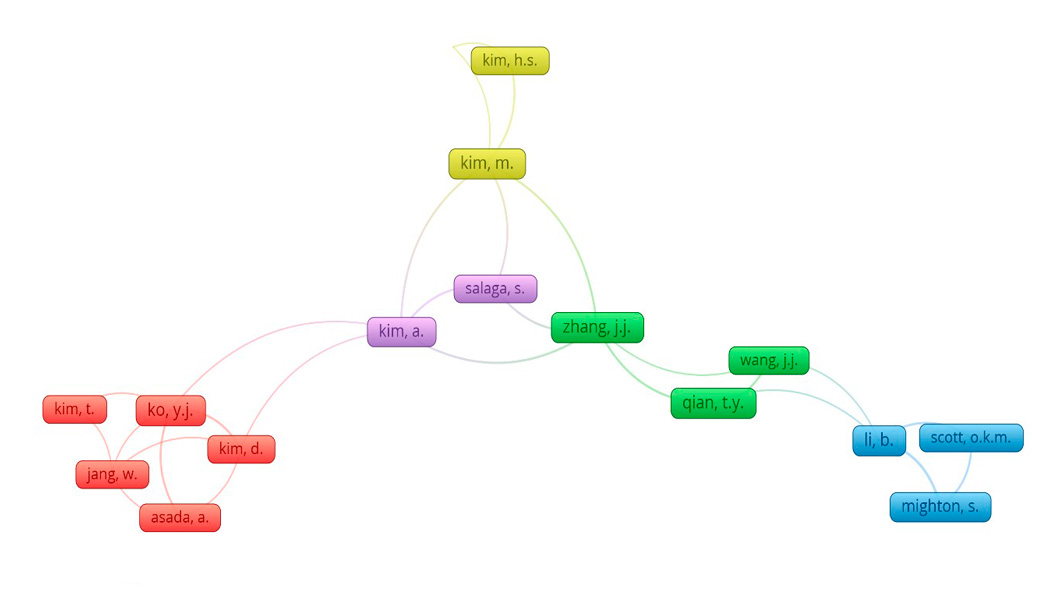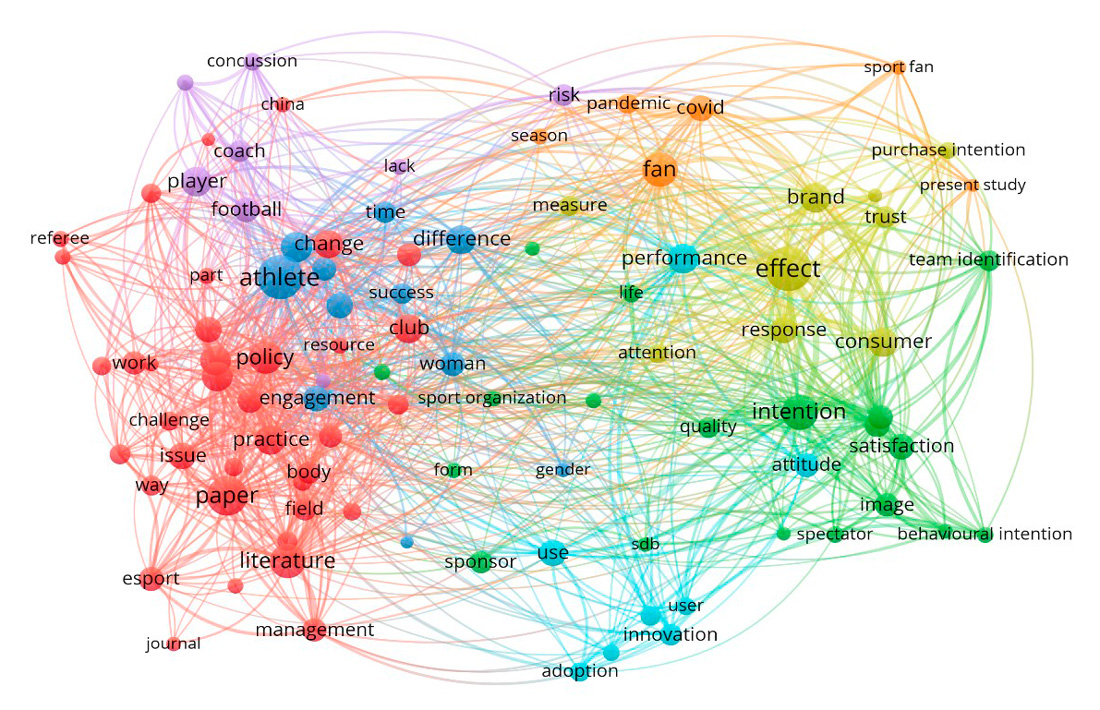Research Article
State of Sport Management Research in the first half of 2022 (January-June): An Overview

The Sport Management Digest (SMD) is a new type of publication design to provide a high-level synthesis of research in the field published in 10 established sport management journals. It is published biannually in March and September. Therefore, the SMD should not be perceived as a competitor to the existing journals rather as a complementary publication freely available to the global sport management community.
The aim of this introductory article of the SMD is to provide an overview of the research published in the ten specialised journals between January and June 2022. The eight individual sections of the SMD cover in sufficient detail the main topics and key findings of different subject areas. While the current overview is mostly bibliometric and thus quantitative, an attempt has been made to raise some qualitative issues as well. The published research in early 2022 continues to support the earlier conclusion that sport management scholarship has been growing in scope, geography, and appeal. As customary, the present overview of research in the field focuses on three interrelated areas including a bibliometric analysis, theoretical and practical appeal, as measured by the funding received by different studies, and the democratization of knowledge, as exemplified by the number of studies published under the Open Access (OA) regime. These three areas are complemented by an analysis of the geography of sport management research, which provides a temporal map of the geographical distribution of sport management studies as well as their context in terms of sports and settings where research was conducted. As established in the previous issue of SMD, sport management remains a highly contextual activity, and our research has been shaped by established cultural preferences and sport structures. In addition, two important features of sport management publications are also discussed including how we frame the contribution of our research and the role of sport management journals special issues for enhancing their impact and appeal.
In the first half of 2022 (January-June), the ten sport management journals published a total of 22 issues with 277 articles (excluding book reviews and commentaries). Table 1 shows the number of articles by journal including those published under OA, which is discussed below. Some 576 authors affiliated with over 450 institutions have written these articles which represents numbers comparable to the output in 2021.
Table 1 Total number of articles and Open Access ones published in 10 sport management journals in the first half of 2022 (January-June)
| Journal | Founded |
Publication frequency/ year |
Impact factor 2021 |
Articles No |
Open Access No/% |
|---|---|---|---|---|---|
|
Journal of Sport Management https://journals.humankinetics.com/view/journals/jsm/jsm-overview.xml |
1987 |
5 |
3.69 |
27 |
2/7 |
|
Sport Management Review |
1998 |
5 |
6.57 |
29 |
4/14 |
|
International Journal of Sports Marketing
|
1999 |
4 |
2.93 |
36 |
2/5 |
|
European Sport Management Quarterly |
2001 |
5 |
4.00 |
33 |
9/27 |
|
International Journal of Sport Finance |
2006 |
4 |
0.94 |
8 |
0/0 |
|
International Journal of Sport Communications https://journals.humankinetics.com/view/journals/ijsc/ijsc-overview.xml |
2008 |
4 |
N/A |
6 |
0/0 |
|
International Journal of Sport Policy and Politics |
2009 |
4 |
0.69 |
30 |
11/27 |
|
Journal of Sports Economics |
2011 |
6 |
2.22 |
38 |
8/21 |
|
Communication and Sport https://journals.sagepub.com/home/com |
2013 |
6 |
3.17 |
50 |
11/22 |
|
Journal of Global Sport Management https://www.tandfonline.com/loi/rgsm20 |
2016 |
4 |
N/A |
20 |
7/35 |
USA-based scholars continue to be the largest contributor to publications in the ten sport management journals. This can be partly explained by the fact that the US hosts the largest number of institutions offering sport management degrees, some of which are well-established and boosting a critical mass of scholars and graduate students. Like last year, the contribution of American scholars is followed by those from the UK, Canada, Germany and other countries. It should be noted that the geography of publications also includes scholars from Taiwan, Turkey, Singapore, Thailand and other less represented countries in the field.
Sport management research has been funded by a range of research councils, governments, charities and commercial companies. Ninety-two agencies funded research published in the ten journals. The range of funding sources includes intergovernmental agencies such as the European Commission, DCICD, national governments (e.g., Canada, Australia, China, Singapore, USA), major sport organisations such as WADA, various national research foundations (e.g., National Nature Science Foundation, China, National Research Foundation, Korea, SSHRC) as well as universities. This range of funding sources is highly indicative of the appeal and potential impact of the sport management research conducted.
The first two issues of the SMD have discussed at some length the democratisation of knowledge promoted by the Open Access (OA) approach to publication. The background to the rationale and main principles of the OA approach were laid out in the document Plan S launched in September 2018 and can be found at this link (https://www.coalition-s.org/guidance-on-the-implementation-of-plan-s/). In a nutshell, the main principle of Plan S stipulates that beginning from 2021, all scholarly publications funded by public or private grants provided by national, regional and international research councils and funding bodies, must be published in Open Access Journals. Out of the 277 published articles analysed in the SMD, 53 (19%) were OA (see Table 1). Except for the International Journal of Sport Finance and International Journal of Sport Communications, the rest of the journals published OA articles at a rate between 27%-35%. While having free access to published research is welcome, we should not forget that countries and institutions who do not have access to resources will be in a disadvantaged position compared to those who can afford to pay the publication fee. The cost of publishing a single article continues to be very high and exceeds $6,000 for some journals. Many institutions would be reluctant to support OA publications by their staff because for this amount of money for a single article, they would be able to subscribe the institution for all ten journals included in the SMD for a year. Readers can check out the OA policy of their targeted journal by using the ‘Journal checker tool’ (https://journalcheckertool.org/).
The bibliometric analysis below uses the VOSviewer software (van Eck & Waltman, 2020) to examine the strength of the links between sport management research by looking into the co-authorship links (i.e., the number of publications two researchers have co-authored), co-occurrence links (i.e., the number of publications in which two terms occur together), and the bibliographic coupling links (i.e., the number of cited references two publications have in common). The strength of the link is represented by a positive numerical value where the higher the value the stronger the link. The results are visualised in three figures. It ought to be noted though that due to the limited time subject to analysis (6 months), the co-authorship and co-occurrence links reported cannot be representative of the sport management field, rather they ought to be viewed as a snapshot. The next issue of the SMD will be able to combine data from 2021-22 and hopefully present a more comprehensive analysis.
Figure 1 depicts the co-authorship links where two authors had worked together on a publication. Out of 596 authors who published in the ten journals, 95 met the threshold of working together on two documents, and the different colours in figure 1 help see those collaborations.

Figure 1. Co-authorship network visualization across ten SM journals in 2022 (January-June)
Figure 2 shows the co-occurrence links, where out of 1036 key words, 17 met the threshold of occurring more than 5 times. The size of the word indicates its weight. Figure 2 also helps to see the distance between two words where the higher the distance the lesser the connectedness. For example, the word ‘football’ dominated in the research published, followed by ‘social media’. In the same analysis of the SMD issue 1 (2), the word ‘football’ was closely related to ‘organisations’ and ‘governance’, but this time it was related to ‘sport journalism’.
Figure 3. Visualization of co-occurrence network of important terms in the ten SM journals in 2022 (January-June)

Figure 2. Key words co-occurrence network visualization ten SM journals in 2022 (January-June)
Both the different types of networks and the author co-citation (ACC) analysis have the power to reveal the intellectual structure of the sport management discipline. The Sport Management Digest will continue to analyse the intellectual structure of the discipline which will help researchers and practitioners to readily understand who and where conducts what kind of research. This information is also valuable for devising research strategies of different centres, departments, and universities as well as academic publishers. It is hoped that readers will find this analysis useful.
Figure 3. Visualization of co-occurrence network of important terms in the ten SM journals in 2022 (January-June)

The insights about the sport management field intellectual structure generated by the bibliometric analysis can be complemented by an analysis of the ways in which scholars frame their contributions to sport management. A novel study by Stenling and Fahlén (2022) examined128 papers published between 2001 and 2020 in ESMQ, SMR and JSM. The authors revealed that 94 (73%) of the papers used the track-bound model of framing their contributions by spotting a gap in the literature and addressing it. Another group of papers (20/15%) framed their contributions as ‘application spotting’, that is, applying current knowledge to a new practice, thus generating a new theoretical and/or practical perspective. The rest of the papers used a combined model of framing their contributions. Importantly, the authors found no unframed papers which in their view “is likely indicative of a general rising of the publishing standards in our field” (p.14).
Of the ten journals covered by the SMD, the following journals published a special issue in the first half of 2022: Journal of Sport Management 36 (3), ‘State of Literature’ guess edited by Fink, James & Tainsky; European Sport Management Quarterly 22 (1) ‘Sport and COVID-19: Impact and Challenges for the Future: Volume 2’ guess edited by Smith & Skinner; International Journal of Sport Marketing and Sponsorship 23 (20), ‘Sport Management Using Partial Least Squares Structural Equation Modelling (PLS-SEM)’, guess edited by Cepeda-Carrión, Hair, Ringle, Roldán & García-Fernández, and Journal of Global Sport Management 7 (2) ‘Managing Sport for Development and Peace’ guess edited by Giulianotti, Collison & Hognestad.
Journals’ special issues have the power to focus attention on specific topics and to explore them more holistically and systematically. Scelles (2020) analysed 180 special issues published in 27 sport management and sociology journals with a CiteScore over the 2014–2020 period which generated 1,534 cites. Among the journals analysed were ESMQ, IJSPP and SMR. The author concluded that “The comparison across SIs (special issues, explanation added) reveals 14 SIs with an average ratio above 2.25 (i.e., an average impact more than twice and a quarter higher than the journal without the SI)” (p.9). Most sport management journals subject to analysis in the SMD tend to publish special issues once a year, which involves a carefully planned and managed process on the part of the editorial board, guess editors and contributing authors and reviewers.
Happy reading!
References
Scelles, N. (2021). Impact of the special issues in sport management and sociology journals, Managing Sport and Leisure, DOI: 10.1080/23750472.2021.2008267
Stenling, C., & Fahlén, J. (2022). Taking stock of sport management research in the new millenia–research contributions, worthwhile knowledge, and the field’s raison d’être. European Sport Management Quarterly, 1-20.
Van Eck, N. J., & Waltman, L. (2010). Software survey: VOSviewer, a computer program for bibliometric mapping. Scientometrics, 84(2), 523-538. https://doi.org/10.1007/s11192-009-0146-3
